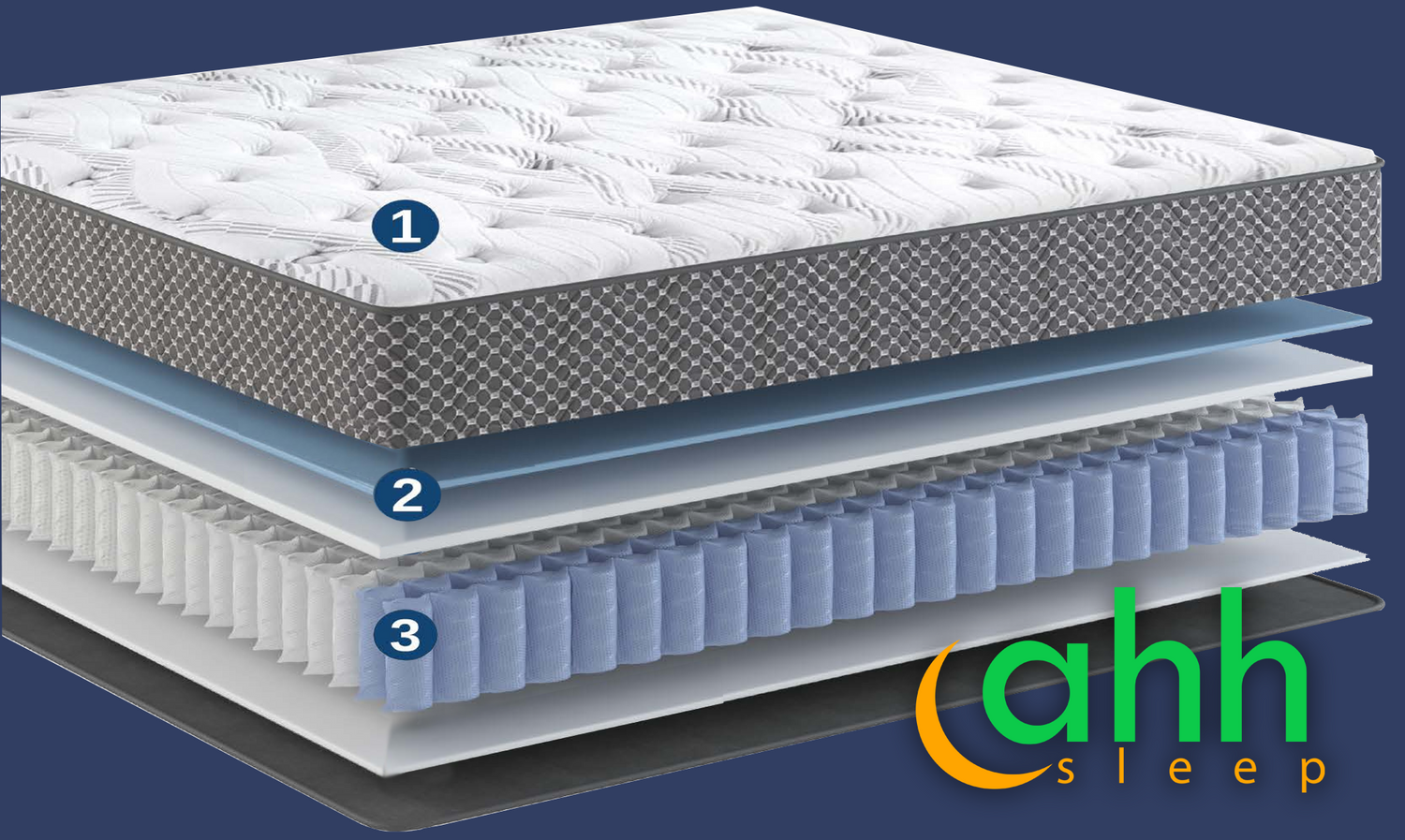Introduction
When it comes to choosing a mattress, understanding its composition is essential to making an informed decision. Mattresses are made up of multiple layers, each serving a specific function to provide comfort, support, and pressure relief. In this overview, we'll delve into the key components of a mattress and how they contribute to a restful night's sleep.

1) Comfort Layer
The comfort layer is the topmost layer of the mattress, directly beneath the cover. Its primary function is to provide initial cushioning and contouring to the body. Different materials are used in the comfort layer, such as fiber or polyurethane foam, each offering unique properties and levels of comfort.
Keywords: comfort layer, fiber, polyurethane foam, memory foam, latex
2) Pressure Relief Layer
Beneath the comfort layer lies the pressure relief layer, also known as the transition layer. This layer is designed to distribute body weight evenly, reducing pressure points and promoting proper spinal alignment. Memory foam is often used in the pressure relief layer for it's ability to contour to the body and alleviate pressure. Sometimes latex can be found as an alternative to memory foam, but is more expensive and less effective.
Keywords: pressure relief layer, memory foam, latex, spinal alignment
3) Support Layer
At the core of the mattress lies the support layer, responsible for maintaining spinal alignment and preventing sagging. This layer typically consists of coils, with wrapped coils being a premium feature that enhances support and reduces motion transfer. Foam may also be used in the support layer, providing additional contouring and support.
Keywords: support layer, coils, wrapped coils, foam, motion transfer
Integration of Mattress Models
Let's take a closer look at how these components are incorporated into the Tuck, Lull, Doze, and Sopor mattresses:
- Tuck Mattress: Features a stretch knit breathable cover, 1" of gel-infused memory foam in the pressure relief layer, and a high-density core support foam in the support layer.
-
Lull Mattress: Utilizes a quilted top with a breathable cover in the comfort layer, 2" of gel-infused memory foam and 2" of high-density comfort foam in the pressure relief layer, and an ISO coil support system with wrapped coils for enhanced support.
-
Doze Mattress: Comes with a stretch knit breathable cover with phase change material in the comfort layer, 2" of 4lb gel-infused memory foam and 2" high-density comfort foam in the pressure relief layer, and an ISO Coil+ support system with wrapped coils for added support.
-
Sopor Mattress: Features a stretch knit breathable cover with phase change material in the comfort layer, 3" 4lb gel-infused memory foam and 3" high-density comfort foam in the pressure relief layer, and an ISO Coil+ support system with wrapped coils for superior support.

